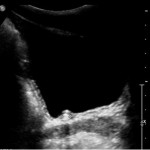Controversies in management of high-risk prostate and bladder cancer
Recently, there has been substantial progress in our understanding of many key issues in urological oncology, which is the focus of this month’s BJUI. One of the most substantial paradigm shifts over the past few years has been the increasing use of radical prostatectomy (RP) for high-risk prostate cancer and increasing use of active surveillance for low-risk disease [1,2].
Consistent with these trends, this month’s BJUI features several useful articles on the management of high-risk prostate cancer. The first article by Abdollah et al. [3] reports on a large series of 810 men with D’Amico high-risk prostate cancer (PSA level >20 ng/mL, Gleason score 8–10, and/or clinical stage ≥T2c) undergoing robot-assisted RP (RARP). Despite high-risk characteristics preoperatively, 55% had specimen-confined disease at RARP, which was associated with higher 8-year biochemical recurrence-free (72.7% vs 31.7%, P < 0.001) and prostate cancer-specific survival rates (100% vs 86.9%, P < 0.001). The authors therefore designed a nomogram to predict specimen-confined disease at RARP for D’Amico high-risk prostate cancer. Using PSA level, clinical stage, maximum tumour percentage quartile, primary and secondary biopsy Gleason score, the nomogram had 76% predictive accuracy. Once externally validated, this could provide a useful tool for pre-treatment assessment of men with high-risk prostate cancer.
Another major controversy in prostate cancer management is the optimal timing of postoperative radiation therapy (RT) for patients with high-risk features at RP. In this month’s BJUI, Hsu et al. [4] compare the results of adjuvant (≤6 months after RP with an undetectable PSA level), early salvage (administered while PSA levels at ≤1 ng/mL) and late salvage RT (administered at PSA levels of >1 ng/mL) in 305 men with adverse RP pathology from the USA Cancer of the Prostate Strategic Urologic Research Endeavor (CaPSURE) registry. At 6.2 years median follow-up, late salvage RT was associated with significantly higher rates of metastasis and/or prostate cancer-death. By contrast, there was no difference in prostate cancer mortality and/or metastasis between early salvage vs adjuvant RT. A recent study from the USA National Cancer Data Base reported infrequent and declining use of postoperative RT within 6 months for men with adverse RP pathology, from 9.1% in 2005 to 7.3% in 2011 [5]. As we await data from prospective studies comparing adjuvant vs early salvage RT, the results of Hsu et al. [4] are encouraging, suggesting similar disease-specific outcomes if salvage therapy is administered at PSA levels of <1 ng/mL.
Finally, this issue’s ‘Article of the Month’ by Baltaci et al. [6] examines the timing of second transurethral resection of the bladder (re-TURB) for high-risk non-muscle-invasive bladder cancer (NMIBC). The management ofbladder cancer at this stage is a key point to improve the overall survival of bladder cancer. Re-TURB is already recommended in the European Association of Urology guidelines [7], but it remains controversial as to whether all patients require re-TURB and what timing is optimal. The range of 2–6 weeks after primary TURB was established based on a randomised trial assessing the effect of re-TURB on recurrence in patients treated with intravesical chemotherapy [8], but it has not been subsequently tested in a randomised trial. Baltaci et al. [6], in a multi-institutional retrospective review of 242 patients, report that patients with high-risk NMIBC undergoing early re-TURB (14–42 days) have better recurrence-free survival vs later re-TURB (73.6% vs 46.2%, P < 0.01). Although prospective studies are warranted to confirm their results, these novel data suggest that early re-TURB is significantly associated with lower rates of recurrence and progression.
References
1 Cooperberg MR, Carroll PR. Trends in management for patients with localized prostate cancer, 1990–2013. JAMA 2015; 314: 80–2
2 Loeb S, Berglund A, Stattin P. Population based study of use and determinants of active surveillance and watchful waiting for low and intermediate risk prostate cancer. J Urol 2013; 190: 1742–9
3 Abdollah F, Klett DE, Sood A et al. Predicting pathological outcomes in patients undergoing robot-assisted radical prostatectomy for high- risk prostate cancer: a preoperative nomogram. BJU Int 2015; 116: 703–12
4 Hsu CC , Paciorek AT, Cooperberg MR, Roach M 3rd, Hsu IC, Carroll PR. Postoperative radiation therapy for patients at high-risk of recurrence after radical prostat ectomy: does timing matter? BJU Int 2015; 116: 713–20
5 Sineshaw HM, Gray PJ, Efstathiou JA, Jemal A. Declining use of radiotherapy for adverse features after radical prostatectomy: results from the National Cancer Data Base. Eur Urol 2015; [Epub ahead of print]. DOI: 10.1016/ j.eururo.2015.04.003
6 Baltacı S, Bozlu M, Yıldırım A et al. Significance of the interval between first and second transurethral resection on recurrence and progression rates in patients with high-ris k non-muscle-invasive bladder cancer treated with maintenance intravesical Bacillus Calmette-Guerin. BJU Int 2015; 116: 721–6
7 Babjuk M, Bohle A, Burger M et al. European Association of Urology Guidelines on Non-Muscle-Invasive Bladder Cancer (Ta, T1, and CIS). Available at: https://uroweb.org/wp-content/uploads/EAU-Guidelines- Non-muscle-invasive-Bladder-Cancer-2015-v1.pdf. Accessed September 2015
8 Divrik RT, Yildirim U, Zorlu F, Ozen H. The effect of repeat transurethral resection on recurrence and progression rates in patients with T1 tumors of the bladder who received intravesical mitomycin: a prospective, randomized clinical trial. J Urol 2006; 175: 1641–4
Department of Urology, Hospital Clinic, University of Barcelona, Barcelona, Spain




